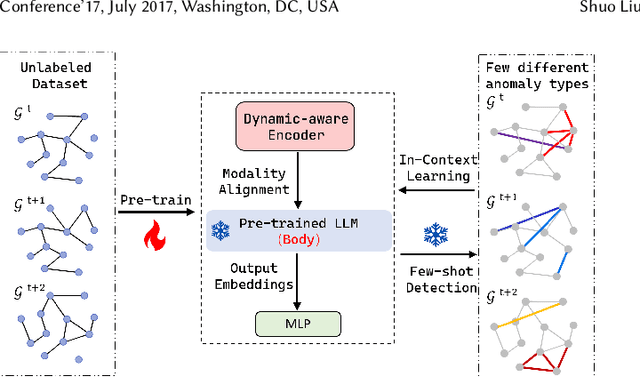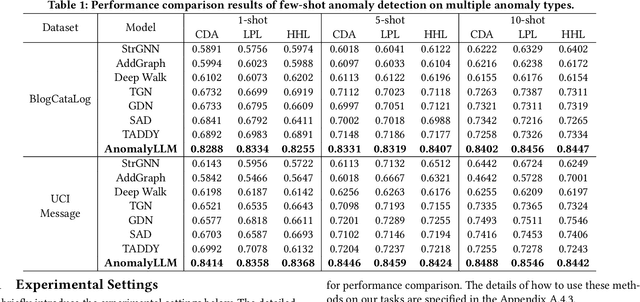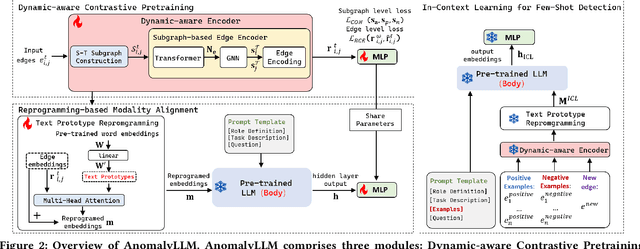AnomalyLLM: Few-shot Anomaly Edge Detection for Dynamic Graphs using Large Language Models
Paper and Code
May 13, 2024



Detecting anomaly edges for dynamic graphs aims to identify edges significantly deviating from the normal pattern and can be applied in various domains, such as cybersecurity, financial transactions and AIOps. With the evolving of time, the types of anomaly edges are emerging and the labeled anomaly samples are few for each type. Current methods are either designed to detect randomly inserted edges or require sufficient labeled data for model training, which harms their applicability for real-world applications. In this paper, we study this problem by cooperating with the rich knowledge encoded in large language models(LLMs) and propose a method, namely AnomalyLLM. To align the dynamic graph with LLMs, AnomalyLLM pre-trains a dynamic-aware encoder to generate the representations of edges and reprograms the edges using the prototypes of word embeddings. Along with the encoder, we design an in-context learning framework that integrates the information of a few labeled samples to achieve few-shot anomaly detection. Experiments on four datasets reveal that AnomalyLLM can not only significantly improve the performance of few-shot anomaly detection, but also achieve superior results on new anomalies without any update of model parameters.
 Add to Chrome
Add to Chrome Add to Firefox
Add to Firefox Add to Edge
Add to Edge